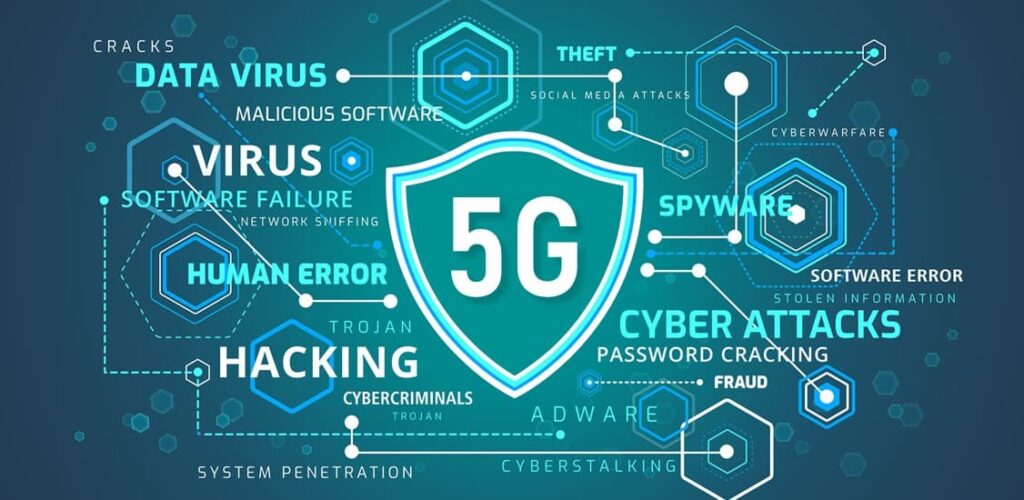The advent of 5G technology is poised to revolutionize how we connect to the internet, offering unprecedented improvements in speed, efficiency, and security. This next-generation wireless technology is set to transform various industries and everyday experiences, but it also brings new challenges and considerations.
Enhanced Internet Speeds
5G technology is designed to deliver significantly higher data transfer rates compared to its predecessors. With potential speeds exceeding 10 Gbps, users can experience a dramatic increase in internet performance. This improvement translates to faster downloads, quicker streaming of high-definition content, and more efficient data handling. For example, users can download large files in seconds and stream ultra-high-definition videos without buffering. These advancements are set to enhance the user experience across multiple applications, from entertainment to remote work.
Low Latency for Real-Time Applications
One of the most notable features of 5G is its ability to significantly reduce latency. Latency, or the delay before a transfer of data begins following an instruction, is crucial for real-time applications where immediate response is essential. With 5G, latency can be reduced to as low as 1 millisecond, enabling near-instantaneous communication.
This is particularly beneficial for applications like autonomous vehicles, which rely on real-time data for safe navigation, and online gaming, where minimal delay can improve the overall gameplay experience. Augmented reality (AR) and virtual reality (VR) applications also benefit from reduced latency, offering smoother and more immersive experiences.
Increased Network Capacity and Efficiency
5G networks are engineered to handle a vastly higher number of simultaneous connections compared to previous generations. This is achieved through advanced technologies such as network slicing, which allows the creation of multiple virtual networks within a single physical 5G network, and beamforming, which directs signals more precisely to users.
This increased capacity is crucial for supporting the growing number of connected devices and the expansion of the Internet of Things (IoT). Smart cities and connected homes will be able to operate more efficiently, with seamless connectivity for everything from smart appliances to environmental sensors.

Advanced Security Measures
With the advancement of 5G technology comes an increased focus on security. The new network infrastructure incorporates advanced security features to address emerging threats and protect sensitive information. Enhanced encryption protocols and improved authentication methods are integral to safeguarding data transmitted over 5G networks. These security measures are designed to protect against various cyber threats, including data breaches and unauthorized access, ensuring that user information remains confidential and secure.
Challenges in 5G Deployment
Despite the numerous benefits, the deployment of 5G technology involves several challenges. The installation of 5G networks requires significant infrastructure upgrades, including the deployment of new cell towers and antennas. This process demands substantial investment and coordination with regulatory authorities.
Additionally, there are ongoing discussions about the potential health effects of increased exposure to higher frequency radio waves used in 5G technology. While current research indicates that 5G operates within safe exposure limits, continued monitoring and evaluation are essential to address any potential health concerns.
5G technology represents a major leap forward in internet connectivity, offering faster speeds, reduced latency, and greater network capacity. These advancements promise to enhance user experiences and drive innovation across various sectors.
However, the successful implementation of 5G also requires overcoming infrastructure challenges and addressing security and health considerations. With careful planning and investment, 5G can deliver on its promise of transforming digital communication and connectivity.
Frequently Asked Questions (FAQs)
1. What are the primary benefits of 5G technology?
5G technology offers significantly higher internet speeds, lower latency, and increased network capacity. These benefits lead to faster downloads, improved streaming quality, and more efficient real-time applications.
2. How does 5G improve internet speeds compared to 4G?
5G provides data transfer rates that can exceed 10 Gbps, far surpassing the speeds offered by 4G. This results in quicker downloads, faster uploads, and enhanced overall performance.
3. Why is low latency important in 5G networks?
Low latency is crucial for applications that require real-time data exchange, such as autonomous vehicles, online gaming, and augmented reality. Reduced latency ensures near-instantaneous communication, enhancing the performance and responsiveness of these applications.
4. How does 5G handle a higher number of devices?
5G networks use advanced technologies like network slicing and beamforming to manage a larger number of simultaneous connections. This increased capacity supports the growing number of IoT devices and smart city applications.
5. What security features are included in 5G technology?
5G incorporates advanced encryption protocols and improved authentication methods to protect data and ensure secure communications. These features help safeguard against cyber threats and maintain user privacy.
6. What are the challenges associated with deploying 5G networks?
Challenges include the need for significant infrastructure upgrades, high investment costs, and addressing potential health concerns related to higher frequency radio waves. Successful deployment requires careful planning and coordination with regulatory bodies.
7. Are there health risks associated with 5G technology?
Current research indicates that 5G technology operates within established safety limits for radiofrequency exposure. Regulatory bodies continue to monitor and evaluate the health effects of 5G to ensure it remains safe for public use.